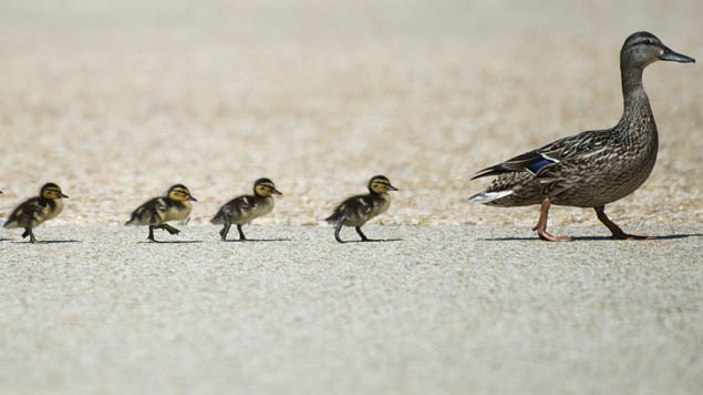Follow
the podcast on


I can't turn this one down - it's ducklings!
Have you ever noticed when you see ducklings on the water they all line up in a row behind mum?
I had assumed that this was so they didn't get lost and they could all see each other, but no - fluid dynamics has just figured out the ducklings are wave riding to save energy!
Published in the Journal of Fluid Mechanics.
The researchers used computer modelling to look at the wake created by mummy duck when she swims and then calculated the amount of energy a duckling used when swimming on it's own.
When alone, a duckling kicks up waves in its wake, wasting energy that could instead be used to move it forwards. This drag slows the ducking down and it needs to use more energy to go where it wants to.
However, when positioned correctly behind the wave created by mummy duck, the ducklings experience 158% less wave drag compared to without mum meaning that mum's wake actually helps to push the duckings forwards!
Being good siblings, the ducklings share this benefit with each other and each duckling in the line passes along the energy saving waves to those behind them meaning that all of the ducklings get a free ride.
The only caveat is that to reap the benefits, the ducklings need to keep up with their mum. If they fall out of position, swimming gets harder, and they have to use more energy to try and get back in line.
So there you go - the next time you see a line of baby ducklings, know that they are actually surfing the wave of their mum!
Take your Radio, Podcasts and Music with you









